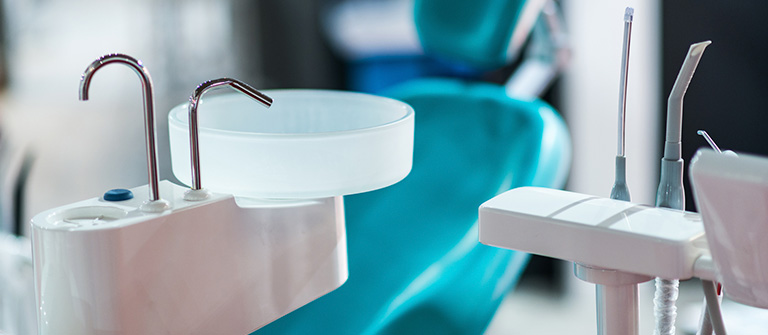Each year brings changes in dental billing. Whether it’s a software update, a change in dental procedure codes, or insurance plans, the field is always evolving. As a dentist practice owner, you’ll want to stay ahead of the latest shifts to ensure accuracy, maintain compliance with insurance providers, and receive fair compensation for your services.
The American Dental Association (ADA) Dental Claim Form includes several updates, including additional codes and revisions. Learn more about these changes, their impact on practices, and how you can leverage them for success.
Overview of dental billing and coding
Insurance codes in the dentistry field are known as Current Dental Terminology (CDT) codes, which are maintained by the ADA. Dental coding is the process of ascribing CDT codes to services provided to patients. They essentially serve as communication between your practice and insurance providers, giving services a detailed and standardized description so healthcare identities can determine proper reimbursement.
Accurate and complete coding helps you avoid denied claims, reduced reimbursements, and compliance issues. The process requires a strong understanding of the CDT codes and services they represent, as well as an understanding of the patient’s medical history and services they’ve received.
ADA claim form changes
The most significant dental billing change is a new ADA claim form (2024). The form is required for all dental claims and hasn’t been updated for several years. The following changes were introduced with this claim form to include additional room for data, expedite the billing process and facilitate timely, accurate claim reimbursements.
1. Box 3a
Box 3a was recently introduced as a designated space to enter the payer ID, a five-digit numeric number unique to every insurance company that signals where a claim should go. Previously, there was no area for this information on the ADA dental claim form, which led to billers manually adding it to an undesignated spot. Sometimes, it wasn’t included at all.
The new claims form includes the phrase “Payer ID” with a standalone box to add the identification. This update was made to facilitate uniform billing, ensuring that claims are submitted to the correct payors.
2. Box 11A
Box 11a was introduced to provide a place to enter payer ID and secondary insurance if applicable. If the patient does not have secondary insurance, you can leave this spot blank.
3. Box 28
Box 28 allows you to add clarifying notes that address surface indications when restoration involves an anterior incisal edge. The box is highlighted in yellow to make it more visible to the agent processing the claim.
4. Box 39a
Box 39a is another addition to the latest ADA claim form, which allows you to enter the date for a patient’s last scaling and root planing (SRP) procedure. Note that this is for a patient who has a history outside of your office, so you’ll want to consult with your patient to get as close as you can to the correct date as possible before entering the information.
Note that you must enter the date of the procedure in mm/dd/yy format, otherwise the claim could be rejected.
5. Boxes 53a-58
Boxes 53a-58 have been amended to accurately report when the treating dentist is Locum Tenens, or a substitute dentist filling in for another dentist on medical leave or vacation.
If a dentist’s information is entered in this box who did not treat the patient, it will be deemed fraudulent, so it’s pertinent that you only enter the dentist’s information who is treating the patient in this specific box.
6. Box 56a
Box 56a is another addition to the ADA dental claim form, which adds a space to input a specialty dental code or the type of dental professional who delivered treatment. This code is different than a national provider identification number, and it is assigned to a treating dentist who is a specialist who comes in to treat your patient.
New dental procedure codes
The code maintenance committee (CMC) ensures all stakeholders have a role in evaluating and voting on new and updated CDT code changes. The most recent ADA dental conference saw committee members approving several new codes in diagnostic, prevention, restorative, implant, and surgical services (2024). Here’s a list of new dental codes to be aware of:
1. Diagnostic
D0396 was recently introduced, allowing practices to input this dental code for filing 3D printing scans used for obtaining a diagnostic cast — also known as a study model.
2. Preventive
D1301 was added for immunization counseling, where you review your patient’s vaccine and medical history and discuss the benefits, risks and consequences of not obtaining the COVID-19 vaccine. Counseling typically includes a discussion of questions and concerns the patient, family, or caregiver may have, and suggestions on where the patient can obtain the vaccine.
3. Restorative
The following includes dental codes for procedures in the restorative category:
- D2976: This code is for band stabilization, and it can be used with each tooth that requires a band, often cemented around a molar tooth after a multisurface restoration. It adds support and resistance to fracture until the patient is ready for a full cuspal coverage restoration.
- D2989: This code can be used when a physician decides to remove a tooth that, following excavation, decides it cannot be restored.
- D2991: This new code is for applying hydroxyapatite regeneration medicament and is employed on a tooth-by-tooth basis.
4. Implants
D6089 is a new code that can be applied when accessing and retorquing a loose implant screw.
5. Oral and maxillofacial surgery
These codes were added for oral and maxillofacial surgery:
- D7284: D7284 was introduced for an excisional exam of minor salivary glands, where a patient shows signs and symptoms of Sjogren’s, the drying of the eyes and mouth.
- D7939: This code is for an osteotomy using a dynamic robotic assistant. Many oral surgeons already have this in place to allow for virtual guidance during a procedure.
6. New category of service
The following CDT codes are now listed under the “NEW” Category of Service called Sleep Apnea Services (Burger, 2024). These are no longer listed under Adjunctive General Services/Miscellaneous Services.
- D9938: This code includes the fabrication of a custom removable clear plastic temporary aesthetic appliance.
- D9939: This includes the placement of a custom removable clear plastic temporary aesthetic appliance.
- D9954: This code is for the creation and prescribing of an oral appliance therapy (OAT) morning repositioning device. The device is used after removing the device, as it can relieve muscle and jaw pain or occlusal changes.
- D9955: This is for an OAT titration visit, where the patient returns post-delivery of an appliance, and the physician evaluates their response to treatment, ensuring the device is working properly and there are no side effects.
- D9956: This is for a post-delivery visit of a mandibular advancement device, assessing a patient’s response to treatment. It also includes a sleep apnea test for patients at risk of the disorder and helps the physician determine the optimal position of the mandible.
- D9967: This code includes an assessment for sleep-related breathing disorders, performed alone or alongside another evaluation.
Revised dental codes
The ADA claims form also includes the following revised codes:
- D2335: The committee simplified D2335, taking out the jargon and making it a code for a resin-based composite including four or more surfaces. The revision removed mention of the incisal angle, which isn’t a tooth surface and caused coding confusion and claim preparation delays when dentists contacted the ADA for clarification.
- D5876: This code is for the addition of a metal substructure to full acrylic dentures. Employed per arch, this revision adds a descriptor that emphasizes the procedure is only for adding metal substructures to strengthen the prosthesis.
Common coding mistakes and how to avoid them
Many practices encounter common obstacles in the billing and coding processes. Here’s how to prevent these mistakes and get what you need for your practice:
Avoid alternating D4910 and D1110
Many insurances reject D4910, so practices will alternate with D1110 — not charging for the services they actually provided. However, doing so can cause you to abandon your standard of care and lead to compliance issues.
A good rule of thumb is to code what you do and do what you code. Avoid alternating codes, and in the note section where you write your narrative, pay the allowable amount toward the procedure. That way, you are an advocate for your insurance, your patients get what they need from their insurance savings, and you do not abandon your standard of care.
Avoid misusing common codes
Many rejections or denials occur when the following codes are misused:
- D0160: This is not a standalone exam code. It must be followed by a complete exam code or a periodontal comprehensive exam code. Most payors will allow you to use this up to twice a year, but always verify and get a breakdown of your insurance savings. This occurs when a clinician wants to see the patient back for another appointment, such as a second evaluation appointment for a condition like TMJ.
- D0170: D0170 is also not a standalone code, and it involves the re-evaluation of an established patient for a specific problem in which definitive treatment has not been rendered. This code is often involved with a D0171, a post-operative code used after surgery or a tooth has been removed and a patient returns for a follow-up. D0170 is not the code for a follow-up, so ensure you know the difference.
- D0180: This is a standalone code that cannot be used in conjunction with D0150. This comprehensive periodontal evaluation code is used with new or established patients who present symptoms or signs or have high-risk factors for periodontal disease. Keep in mind there are guidelines when using this code and filing on behalf of your patient. First, you must submit a six-point measurement around every tooth. Second, you must document specific items like bleeding points, bone loss, and furcation. Third, ensure that you submit legible, clear X-rays for a full-mouth series.
- D2950: Another common mistake practices make is confusing D2950 and D2949. Note that D2950 is involved in retention, while D2949 is involved in restoring services, such as an endodontic tooth.
Code and charge for D0220 and D0230
Always remember to code and charge for D0220 and D0230 (2023). The first periapical radiographic image must be reported first, followed by the additional D0230.
Note codes for silver diamine fluoride 38% (SDF)
Note that codes D1354 and D1355 can be used together with D1206 if your patient’s insurance covers the D1206. These codes can be used when providing fluoride varnish treatment to patients with an increased risk of tooth decay.
How to leverage coding changes for success
Now that you understand the most recent coding updates, you’ll want to follow best practices to ensure accurate, compliant coding and timely reimbursements. Use the following tips to leverage the changes for success:
1. Fill out forms right the first time
A good rule of thumb is to do your coding right the first time to avoid problems later. For example:
- Use the correct claim form when filing.
- In Box 33, ensure that you note whether services included replacing missing teeth.
- In Box 35, note additional information, or your “narrative” or “remarks.”
- Remember to fill out box 3 — signed treatment plan and fees, as well as box 37 — authorization of benefits.
You might also use our ToPS coding checklist, which includes a dental codes cheat sheet to help you implement all new and revised codes.
2. Use a checklist
Use a checklist before submitting claims to ensure:
- The insurance claim is filled out properly.
- Correct procedures are listed on the claim.
- The claim was filed and submitted within 24 hours.
- Correct documentation was sent with the claim.
Keep an eye on the claims submission process, which requires three steps:
- Validation: This means your claim was validated and either approved, rejected, or given a warning. With a warning, you will receive a note on what needs to be corrected as well as a timeline to make the changes. Rejection means the claim is sitting in your third-party software.
- Confirmation: The confirmation stage occurs when your claim is on its way to insurance providers.
- Clearinghouse: This means your claim is on the desk of insurance providers.
3. Follow best practices
When filing, follow these best practices to ensure a timely reimbursement process:
- Never include anything that is not documented in the clinical chart.
- Use proper spelling, punctuation and grammar.
- Avoid handwritten narratives to ensure legibility.
- Omit irrelevant or unnecessary comments.
- Never use aggressive language or statements to challenge the expertise of the consultant or the components of the plan.
- Include clear, diagnostic-quality radiographs.
4. Consider a digital payment solution
When collecting your patient portion, you’ll want to ensure you have an easy strategy in place. An all-in-one platform can provide the following benefits for your practice:
- Reduce time spent on manual administrative tasks
- Decrease outstanding accounts receivable
- Eliminate paper and the need to mail statements
- Provide integrations to drive more revenue
- Enhance the patient experience and keep them loyal to your practice
At Rectangle Health, we offer payment solutions for practices of all sizes to simplify day-to-day processes, including payment capture, patient engagement, and compliance.
Simplify your processes with Rectangle Health
Dental billing and coding are crucial in aiding the reimbursement process, ensuring fair compensation for your services and helping you maintain compliance with insurance providers. Stay updated on the latest codes to ensure accuracy, optimize revenue, and enhance your practice’s efficiency and success. At Rectangle Health, we make the process more accessible than ever with our payment solution — Practice Management Bridge®.
Our comprehensive platform is easy to implement and use, automating day-to-day operations like payments, compliance, and staying in touch with patients. To drive more revenue and create incredible efficiencies, request a demo today.
References
- American Dental Association. (2024). ADA Dental Claim Form. https://www.ada.org/publications/cdt/ada-dental-claim-form
- American Dental Association. (2024). Code Maintenance Committee (CMC). https://www.ada.org/publications/cdt/code-maintenance-committee
- American Dental Association. (2023, January 1). Guide to Intraoral Comprehensive Series of Radiographic Imaging Codes – Understanding the 2023 Revisions. https://www.ada.org/-/media/project/ada-organization/ada/ada-org/files/publications/cdt/v1__intraoralcomprehensiveseriesguide_2023jan.pdf?rev=7173d3b65e2440b393012c9014702dff&hash=D21A40F363E20EFB874B7197944AE3DC
- Burger, D. (2023, March 21). Code Maintenance Committee approves four new CDT codes for sleep apnea. https://adanews.ada.org/ada-news/2023/march/code-maintenance-committee-approves-four-new-cdt-codes-for-sleep-apnea/


